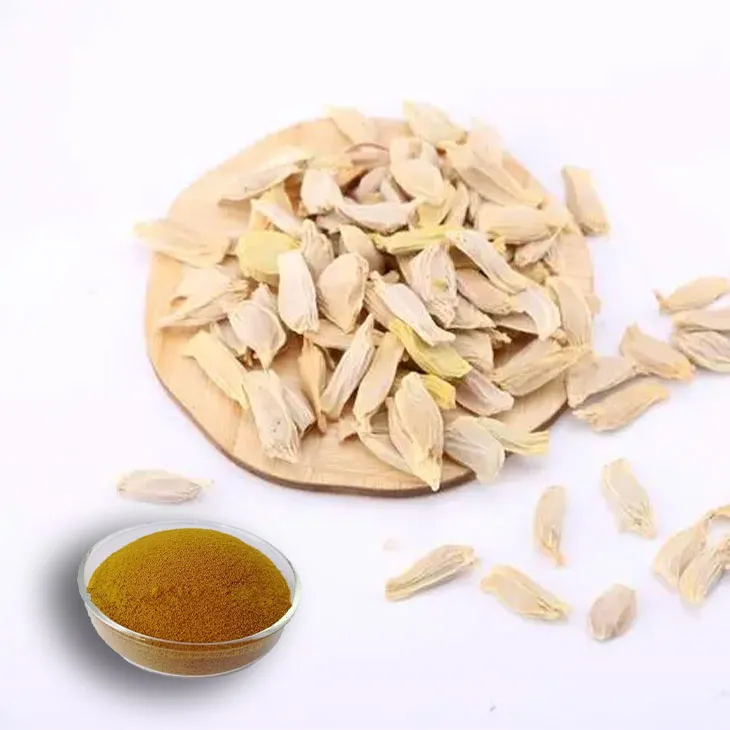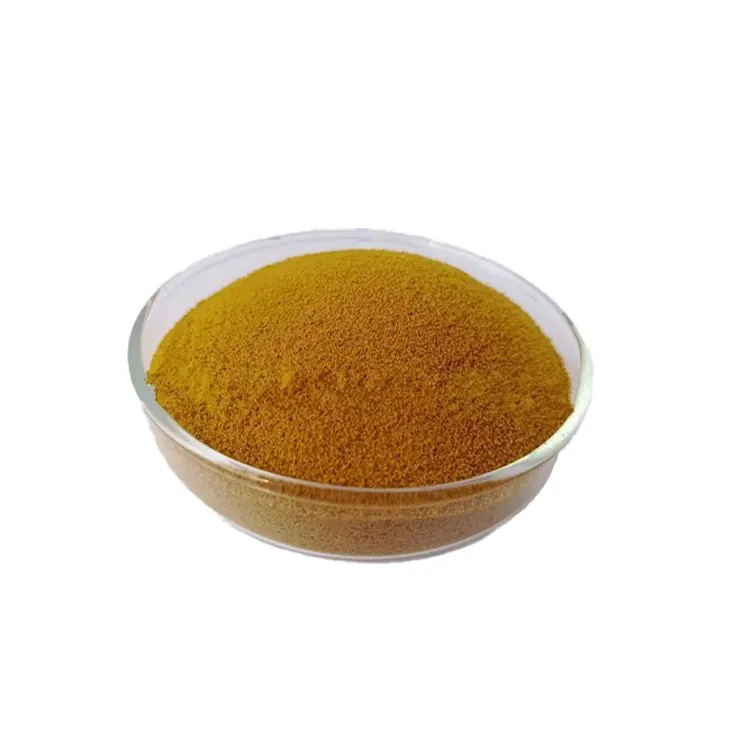- 0086-571-85302990
- sales@greenskybio.com
Extraction Technology and Production Process of Grapefruit Seed Extract Powder
2024-11-26

1. Introduction
Grapefruit Seed Extract Powder has emerged as a highly valuable substance in numerous industries. Its unique properties and potential applications have made it a subject of great interest. This extract powder is rich in various bioactive components, which contribute to its functionality in different fields such as food, medicine, and cosmetics.

2. Extraction Methods
2.1 Solvent Extraction
Solvent extraction is one of the most commonly used methods for obtaining Grapefruit Seed Extract Powder. In this process, suitable solvents play a crucial role. These solvents are selected based on their ability to dissolve the active components present in the grapefruit seeds effectively.
The choice of solvent depends on several factors. For example, the polarity of the solvent needs to match the nature of the target compounds. Commonly used solvents include ethanol, methanol, and water - based solvents. Ethanol is often favored due to its relatively low toxicity and good solubility for many of the bioactive substances in grapefruit seeds.
The extraction process typically involves soaking the grapefruit seeds in the solvent for a specific period. This allows the solvent to penetrate the seed matrix and extract the desired components. The mixture is then stirred or agitated to enhance the mass transfer between the solvent and the seeds. After a sufficient extraction time, the resulting solution contains the extracted components along with the solvent.
2.2 Mechanical Extraction
Mechanical extraction, such as cold - pressing, is another approach to obtaining the initial extract from grapefruit seeds. Cold - pressing is a process that applies mechanical force to the seeds without the use of heat.
This method has several advantages. It helps to preserve the natural properties of the extract as the absence of heat reduces the risk of degradation of heat - sensitive components. In cold - pressing, the grapefruit seeds are crushed or pressed to release the internal fluids, which contain the bioactive substances.
However, mechanical extraction may not be as efficient as solvent extraction in terms of extracting all the desired components. It may require additional processing steps to further enrich the extract with all the valuable substances.

3. Purification Steps
After the extraction process, whether it is through solvent extraction or mechanical extraction, purification steps are essential to ensure the high quality of the Grapefruit Seed Extract Powder.
One of the common purification methods is filtration. Filtration helps to remove solid particles, such as seed debris and insoluble materials, from the extract. This can be achieved through various types of filters, such as filter papers, membrane filters, or filter cartridges. Filter papers are suitable for removing larger particles, while membrane filters with specific pore sizes can be used to separate finer particles.
Another purification technique is centrifugation. Centrifugation involves spinning the extract at high speeds. This causes the denser particles to sediment at the bottom, while the supernatant, which contains the purified extract, can be separated. Centrifugation is effective in removing impurities that are heavier or lighter than the extract itself.
Chromatography is also used in the purification process in some cases. Chromatography techniques, such as column chromatography or high - performance liquid chromatography (HPLC), can separate different components based on their chemical properties. This allows for the isolation and purification of specific bioactive components in the grapefruit seed extract.

4. Drying Techniques
4.1 Spray - Drying
Spray - drying is a widely used drying technique in the production of grapefruit seed extract powder. In this process, the purified extract is first converted into a fine spray. This is typically achieved by using a nozzle that atomizes the liquid extract into small droplets.
The droplets are then introduced into a hot drying chamber. As the droplets come into contact with the hot air, the moisture in the droplets evaporates rapidly. The hot air temperature and the flow rate are carefully controlled to ensure efficient drying while minimizing the degradation of the bioactive components.
Spray - drying results in the formation of fine powder particles. The powder has good flowability and can be easily collected and packaged. However, the high temperature used in spray - drying may cause some thermal degradation of certain heat - sensitive components in the extract.
4.2 Freeze - Drying
Freeze - drying, also known as lyophilization, is another drying method for grapefruit seed extract. In this process, the extract is first frozen. Freezing helps to preserve the structure of the bioactive components.
After freezing, the pressure in the drying chamber is reduced. This causes the ice in the frozen extract to sublime directly from the solid state to the gaseous state, without passing through the liquid state. This sublimation process removes the moisture from the extract, resulting in a dry powder.
Freeze - drying is considered a gentler drying method compared to spray - drying as it operates at lower temperatures. This helps to maintain the integrity of the bioactive components to a greater extent. However, freeze - drying is a more time - consuming and expensive process.

5. Applications in Different Industries
5.1 Food Industry
In the food industry, grapefruit seed extract powder has several applications. It can be used as a natural preservative. The bioactive components in the extract have antimicrobial properties, which can help to inhibit the growth of spoilage - causing microorganisms such as bacteria, yeasts, and molds. This can extend the shelf life of food products.
It can also be added to functional foods as an ingredient with potential health - promoting effects. For example, it may contribute to antioxidant activity, which helps to protect the body against oxidative stress caused by free radicals.
5.2 Medicine Industry
The grapefruit seed extract powder has shown potential in the medicine industry. It has been studied for its antibacterial and antifungal properties. In some cases, it may be used in topical formulations, such as creams or ointments, for the treatment of skin infections caused by bacteria or fungi.
It may also have potential in internal medicine applications. However, more research is needed to fully understand its efficacy and safety when used orally or for systemic treatments.
5.3 Cosmetics Industry
In the cosmetics industry, grapefruit seed extract powder is often used for its antioxidant and antimicrobial properties. It can be added to skincare products, such as lotions, creams, and serums. The antioxidant properties help to protect the skin from damage caused by environmental factors, such as UV radiation and pollution.
The antimicrobial properties can help to keep the skin clean and prevent the growth of acne - causing bacteria on the skin. It may also be used in haircare products, such as shampoos and conditioners, to promote a healthy scalp environment.
6. Conclusion
The extraction technology and production process of grapefruit seed extract powder are complex but crucial for obtaining a high - quality product. The choice of extraction method, purification steps, and drying techniques all influence the final quality of the powder. With its diverse applications in food, medicine, and cosmetics industries, continuous research and improvement in these processes are necessary to fully realize the potential of grapefruit seed extract powder.
FAQ:
What are the common solvents used in solvent extraction of grapefruit seed extract powder?
Common solvents may include ethanol or other food - grade solvents. Ethanol is often preferred as it can effectively dissolve the active components while being relatively safe for subsequent applications in industries like food and cosmetics. However, the choice of solvent also depends on factors such as the solubility of the desired components and the requirements of the final product.
How does mechanical extraction like cold - pressing work in obtaining grapefruit seed extract?
Cold - pressing involves applying mechanical force to the grapefruit seeds without the use of heat. This helps to preserve the integrity of the active components as excessive heat can sometimes degrade them. The seeds are pressed, and the liquid extract is obtained. This initial extract may then undergo further processing steps such as filtration and purification to remove impurities.
What is the importance of purification in the production of grapefruit seed extract powder?
Purification is crucial as it removes unwanted substances such as impurities, residual solvents, and other non - active components. This ensures that the final grapefruit seed extract powder is of high quality, pure, and potent. A pure product is more suitable for applications in the food, medicine, and cosmetics industries, as it reduces the risk of adverse reactions and ensures consistent performance.
How do spray - drying and freeze - drying compare in the transformation of grapefruit seed extract into powder?
Spray - drying involves spraying the liquid extract into a hot drying medium, which quickly evaporates the liquid, leaving behind a powder. It is a relatively fast and cost - effective method. Freeze - drying, on the other hand, involves freezing the extract first and then removing the water by sublimation under vacuum. Freeze - drying is gentler on the active components and can better preserve their biological activity, but it is more expensive and time - consuming.
What are the main applications of grapefruit seed extract powder in the food industry?
In the food industry, grapefruit seed extract powder can be used as a natural preservative due to its antimicrobial properties. It can also be added to certain products for its potential health - promoting effects, such as in functional foods or dietary supplements. Additionally, it may contribute to the flavor or aroma of some food products in a subtle way.
Related literature
- Grapefruit Seed Extract: Composition, Antimicrobial Activity, and Applications in Food Preservation"
- "Production and Characterization of Grapefruit Seed Extract Powder for Cosmetic Applications"
- "The Role of Grapefruit Seed Extract in Medicinal Preparations: A Review of Extraction and Formulation"
- ▶ Hesperidin
- ▶ citrus bioflavonoids
- ▶ plant extract
- ▶ lycopene
- ▶ Diosmin
- ▶ Grape seed extract
- ▶ Sea buckthorn Juice Powder
- ▶ Beetroot powder
- ▶ Hops Extract
- ▶ Artichoke Extract
- ▶ Reishi mushroom extract
- ▶ Astaxanthin
- ▶ Green Tea Extract
- ▶ Curcumin Extract
- ▶ Horse Chestnut Extract
- ▶ Other Problems
- ▶ Boswellia Serrata Extract
- ▶ Resveratrol Extract
- ▶ Marigold Extract
- ▶ Grape Leaf Extract
- ▶ blog3
- ▶ blog4
-
Organic Lycopene Powder Factory.
2024-11-26
-
Bulk purchase of astaxanthin.
2024-11-26
-
The best alfalfa powder in nature.
2024-11-26
-
100% Pure Natural Black Pepper Extract.
2024-11-26
-
Nature's Bounty Cactus Extract.
2024-11-26
-
Hericium erinaceus extract powder
2024-11-26
-
Bitter Melon Extract
2024-11-26
-
Black Rice Extract
2024-11-26
-
Jujube Extract
2024-11-26
-
Lemon Juice Powder
2024-11-26
-
Boswellia Serrata Extract
2024-11-26
-
Polygonum Cuspidatum Extract
2024-11-26
-
Saponin Extract
2024-11-26
-
Ivy Extract
2024-11-26
-
Okra Extract
2024-11-26





















